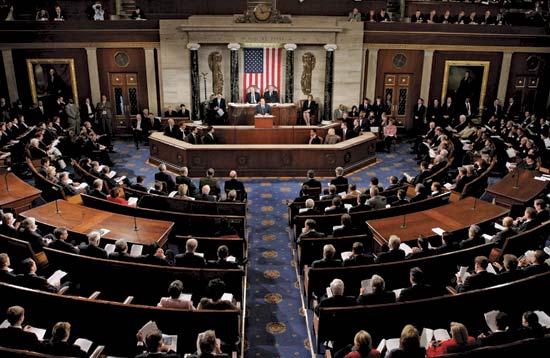Private! The Story of Public Activity Bonds and Infrastruction Construction Funding
The underground utility infrastructure industry has faced an uphill battle in its legislative efforts to increase the federal ante for America’s decrepit environmental infrastructure over the years. Although the current political environment has turned federal funding for the better, it’s clear that long-term financing will be a long-term struggle, according to Eben Wyman, National Utility Contractors Association (NUCA) Vice President of Government Relations.
“Continued SRF funding, establishment of a National Infrastructure Bank and creation of a Water Infrastructure Trust Fund are all on the consideration table,” he said. “NUCA maintains the position that any and all viable funding alternatives must be considered, but that there is clearly room for significant participation from the private sector.”
Opportunities for Private Participation
In the past, whenever the word “private” was included in the same sentence as “water infrastructure,” many in Congress would immediately wince, according to Wyman. Some municipalities have feared that entering into a public-private-partnership (PPP) is little more than a one-way ticket to privatization of their public utility. In recent years, however, because of the increasing economic challenges facing state and local budgets, private sector participation in funding these projects has become much more palatable.

However, Congress controls the total volume of tax-exempt bonds by limiting the amount of PABs states can issue with an annual cap. For example, in 2009, the state volume cap was equal $90 per resident or $273.27 million, whichever was greater. Because our underground infrastructure presents the “out of sight, out of mind” problem, water and wastewater infrastructure traditionally lost out to more politically attractive projects. In 2007, only 1.3 percent of all PABs were issued to water and wastewater infrastructure projects. Removal of the state volume cap would open the door to tremendous opportunities for private investment in these projects. And yes, the private sector is interested. In fact, some in the industry estimate that there is at least $181 billion of private sector dollars waiting to invest in water and sewer markets around the country.
PAB Legislation Gains Momentum in 111th Congress
For decades, NUCA has served as Chair of the Clean Water Council (CWC), the group of 34 national construction organizations working on a broad range of legislation that would increase investment in this infrastructure. This year, NUCA joined and now co-chairs the Sustainable Water Infrastructure Investment Coalition (SWIIC), a large alliance of business associations and corporations interested in increasing private sector opportunities in the water market.
The two coalitions have worked to shepherd the Sustainable Water Infrastructure Investment Act (HR 537/S 6232) through Congress. This pitch was relatively simple. We have water and wastewater needs in the hundreds of billions of dollars. We have a starving market and millions in the industry looking for work. Investment in water infrastructure projects has a proven track record of creating jobs, generating significant economic activity and enhancing local tax bases. Lifting the cap on PABs that fund water infrastructure projects has the potential to raise $6 billion annually in incremental private capital at a low cost to government.
In fact, the Congressional Budget Office recently “scored” or estimated the cost to the federal government at $372 million over 10 years (costs are related to lost tax revenue from the tax exemption on bond interest). In a nutshell: the legislation could generate up to $60 billion at a cost of $372 million over 10 years at a time when the construction industry needs to work and our underground infrastructure needs to be rebuilt.
To push this initiative in Congress, NUCA found its champion in Rep. Bill Pascrell (D-N.J.), author of the House legislation. Pascrell talked about his bill early and often and was never afraid to tell it like it is. During a special order speech in March, Pascrell took to the House floor armed with a dilapidated water pipe encased in Lucite (provided by NUCA), telling his colleagues “this is a rotted water main pipe, much like the pipes in many of our districts and many of our communities. I like to call these the out-of-sight, out-of-mind pipes; you don’t see them until you have a problem with your water main.”
In touting HR 537, Pascrell said the bill “will generate significant investment through the use of tax-exempt bonds for water infrastructure and that is water and wastewater projects. Congress already exempts airports, intercity rail and solid waste disposal sites from those bond caps. My bill would remove water infrastructure projects from the cap as well.”
After countless visits in the House and Senate, the CWC and SWIIC were very pleased to see the language of the PAB bill included in both the House and Senate versions of the tax extenders bill, a $200 package of tax cuts and social spending. Although the bill was looking too heavy on the social spending side, the PAB language was included in the tax extender bill that passed the House just before the Memorial Day recess.
